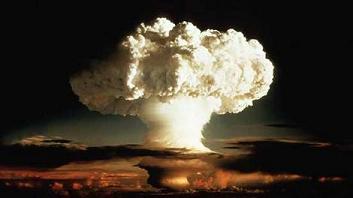New U.S. Nuclear Strategy: A Warmed-Over “Novelty”

Washington has just published its new nuclear doctrine as well as signed the new treaty on arms control with Russia in the midst of a big media fanfare. And yet, upon closer scrutiny, the position of the Obama administration does not mark any real shift from that of its predecessors. It simply attunes the policy of the Bush administration to today’s reality. Even worse, it dodges the two main questions: Will the anti-missile shield reactivate the arms race? Will nuclear weapons be replaced by strategic arms which will prove even more destabilizing? The day before formally releasing the Nuclear Posture Review, which lays out U.S. nuclear strategy [downloadable below], and three days ahead of signing the new START treaty with Russia in Prague, President Barack Obama gave a glimpse of the basic guidelines of his new strategy in an interview with the New York Times [1].
What does the novelty consist in? “If you are a non-nuclear weapons state that is compliant with the Non-Proliferation Treaty (NPT), you have a negative assurance we will not be using nuclear weapons against you.” But if the state violates the NTP – according to Washington’s incontrovertible judgement – the United States can no longer guarantee that it will refrain from using nuclear arms against it.
Here, Obama is pointing his finger at Iran and North Korea, but especially at Iran which is accused of having defied the international community by developing a nuclear programme that “on the current course would provide it with a military nuclear capability”. President Obama, the interviewer recalls, has already declared that he “could not live with a nuclear-capable Iran”.
In substance, this means that the United States reserves the right to a first strike, that is to a “pre-emptive” nuclear attack in order to prevent a country like Iran from ever developing nuclear weapons.
Whereas President Bush’s strategy contemplated the use of nuclear weapons against a vast array of threats, President Obama’s strategy – writes the New York Times – “limits” their use. A somewhat relative limitation since it condones the use of nuclear weapons not only against a nuclear state, but also against “a State that did not sign or was incompliant with the Non-Proliferation Treaty”.
Paradoxically, in the interview, Obama asserts that both “the United States and Israel are very concerned over Iran’s behaviour”, neglecting to mention that while Iran is a party to the NPT and the target of inspections by the International Atomic Energy Agency (IAEA), Israel has never signed the NPT and possesses a powerful nuclear arsenal that was never subjected to international inspection. And while Iran has no nuclear weapons, Israel keeps about one hundred of them aimed at Iran and other countries in the region.
The same thing can be said about the United States’ other ally, Pakistan, that is the owner of nuclear weapons but has never adhered to the NPT. To the question regarding Pakistan’s nuclear stockpile, on which the United States has so far spent at least 100 million dollars to “secure”, Obama replied “I’m not going to talk about the details of Pakistan’s nuclear”. This confirms that the new nuclear strategy of the United States continues to apply the usual double standard criteria.
These are not the only ambiguities. While, on the one hand, he proclaims the reduction of nuclear weapons, on the other hand, President Obama declares that “we maintain a potent deterrent” and “we invest in improved infrastructure to ensure the safety, security and reliability of our nuclear weapons”. And as he announces the “limitation” on the use of nuclear arms, White House officials are saying that the new strategy allows for “nuclear reprisals against a biological attack”: in other words, against a nonnuclear country accused, possibly on the basis of “evidence” provided by the CIA, of having carried out or attempted to carry out a biological attack against the United States.
Moreover, to the question regarding the new generation of “conventional” weapons that the United States is developing, blurring the boundary between conventional and nuclear weapons, Obama retorted that he didn’t intend to get into details. He adopts the same attitude when it comes to U.S. nuclear arms in Europe. In respect of the anti-missile “shield” that the U.S. intends to deploy in Europe, threatening to compromise the new START treaty, Obama chooses to remain silent. However, one who does speak out – and it’s a cold shower – is Russian Foreign Minister Sergei Lavrov who, two days before the Prague Summit, warned that “Moscow reserves the right to withdraw from the new START if the impact of the anti-missile “shield” to be set up by United States significantly outweighs the efficiency of Russia’s nuclear strategic potential” [2].
2010 Nuclear Posture Review (PDF – 2.7 Mb)
Notes
[1] Excerpts from Obama Interview, by David E. Sanger and Peter Baker, The New York Times, 5 April 2010.
[2] START: press point by Sergey Lavrov, Voltaire Network, 6 April 2010.
Manlio Dinucci is geographer and geopolitical scientist. His latest books are Geograficamente. Per la Scuola media (3 vol.), Zanichelli (2008) ; Escalation. Anatomia della guerra infinita, DeriveApprodi (2005).

